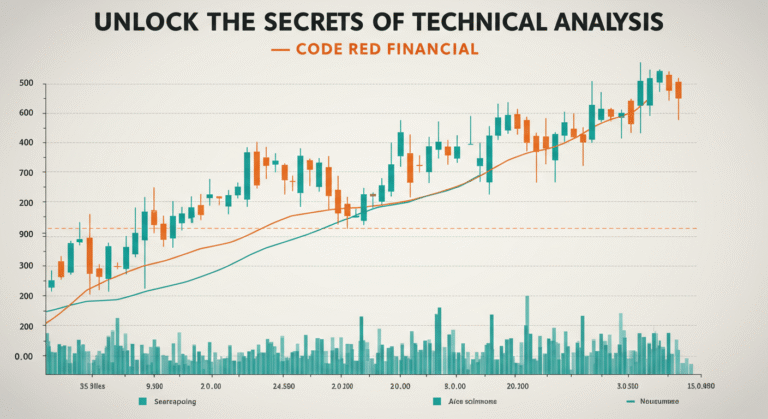
Introduction
So, let’s talk about something that’s often overlooked until it’s desperately needed: home insurance coverage. Ever had that moment when your heart sinks as a storm brews, wondering if you’re covered for what’s about to come? I certainly have. After personally enduring the wrath of Hurricane Helene and Milton, witnessing the devastation across Florida, the Carolinas, Georgia, and Tennessee, I found myself deep in thought about the financial implications for those unprepared. Trust me, having spent years in the insurance industry, the conversations that follow such disasters are far from comfortable.
Here’s the deal: understanding what your home insurance covers can be your financial lifeline. It’s about more than just a policy—it’s about peace of mind in the face of potential catastrophe.
The Basics of Home Insurance
Let’s break it down. Home insurance typically includes coverage for your home’s structure, your personal belongings, liability protection, and additional living expenses if you need to live elsewhere temporarily. But here’s where it gets tricky: not all policies are created equal.
Types of Home Insurance Policies
HO-1 (Basic Form): The most basic form of home insurance. It covers only ten named perils like fire, lightning, and theft. It’s rarely offered these days because it provides such limited protection.
HO-2 (Broad Form): Offers slightly more coverage, protecting against a broader range of named perils, including things like falling objects and the weight of ice or snow. Still, it’s not comprehensive.
HO-3 (Special Form): The most common type of home insurance policy. It covers your home against all perils except those specifically excluded (like flooding and earthquakes). For your personal belongings, however, it only covers named perils.
HO-4 (Renters Insurance): For renters, it covers your personal belongings and liability, but not the structure (that’s your landlord’s job).
HO-5 (Comprehensive Form): The Cadillac of home insurance. It covers both your home and belongings against all perils, except those specifically excluded. It’s more expensive, but it provides the broadest coverage.
HO-6 (Condo Insurance): For condo owners. It covers your unit’s interior, personal property, and liability. The condo association’s master policy usually covers the building’s structure.
HO-7 (Mobile Home Insurance): Similar to the HO-3 but specifically tailored for mobile or manufactured homes.
HO-8 (Older Home Insurance): For older homes with historical significance. It provides coverage based on the actual cash value, not replacement cost, of the home.
Common Exclusions and Additional Coverage
Flood Insurance: Many policies do not cover flooding. For those in flood-prone areas, this is a must-have. Flood insurance can be purchased through the National Flood Insurance Program (NFIP) or private insurers. Don’t wait until the water’s rising to think about this.
Earthquake Insurance: Similar to flood insurance, earthquakes aren’t typically covered under standard policies. If you live in a quake-prone area, this additional coverage is crucial.
Windstorm and Hail Coverage: In regions susceptible to hurricanes and tornadoes, you might need separate windstorm and hail coverage.
Sewer Backup Coverage: A nasty sewer backup can cause massive damage, and it’s usually not covered by standard policies. Consider adding this if you’re in an area with older infrastructure.
Sinkhole Coverage: Florida residents, in particular, need to consider this. Standard home insurance policies usually do not cover damage from sinkholes. Adding sinkhole coverage can protect you from the financial devastation that a sinkhole can cause. It’s a crucial add-on for those living in sinkhole-prone areas.
Replacement Cost vs. Actual Cash Value
Understanding the difference between replacement cost and actual cash value is vital. Replacement cost covers the cost of repairing or replacing your home and belongings without deduction for depreciation. Actual cash value, however, factors in depreciation, meaning you’ll get less money.
Making Your Policy Work for You
Inventory Your Belongings: Keep a detailed inventory of your personal belongings. This can speed up claims and ensure you’re adequately reimbursed.
Review and Update Your Policy Regularly: Life changes, and so should your policy. Major home renovations, acquiring valuable items, or changes in local building codes can affect your coverage needs.
Understand Your Deductible: Choose a deductible that fits your financial situation. A higher deductible can lower your premium, but ensure it’s an amount you can afford out-of-pocket if you need to file a claim.
Bundle Policies: Consider bundling your home and auto insurance with the same provider for discounts. Just ensure you’re not sacrificing coverage for savings.
Shop Around: Don’t settle for the first quote you get. Shop around, compare policies, and read the fine print.
Real Stories, Real Lessons
The Tale of Two Neighbors: Imagine two neighbors: Jane and Bob. Both experienced flooding from Hurricane Milton. Jane had flood insurance, while Bob didn’t. Jane’s policy kicked in, covering the extensive damage to her home and personal belongings. Bob, on the other hand, faced the financial burden alone, draining his savings to rebuild.
The Condo Crisis: Sarah, a condo owner, assumed her association’s insurance covered everything. When a fire damaged her unit, she discovered her personal belongings and the interior weren’t covered. Luckily, she had an HO-6 policy that saved her from financial ruin.
Going Beyond the Basics
Knowing the basics of your coverage is just the start. It’s crucial to dive deeper into the specifics and potential gaps in your policy.
Assessing Your Risk Factors
Consider where you live and the specific risks associated with your area. If you’re in a coastal region, wind and flood insurance might be essential. For those in earthquake-prone areas, adding earthquake coverage is a smart move.
Evaluating Personal Property Coverage
Your policy will have limits on personal property coverage. High-value items like jewelry, art, or collectibles may need additional endorsements to be fully covered. An appraisal can help determine if you need extra coverage.
Liability Protection
Liability protection is often overlooked but equally important. This covers legal and medical expenses if someone is injured on your property. With increasing lawsuit tendencies, it’s worth considering an umbrella policy for extra liability coverage.
Understanding Your Policy’s Fine Print
Every insurance policy comes with exclusions and limitations. Read the fine print carefully to understand what is and isn’t covered. Look out for specific terms and conditions related to the claims process.
Dealing with Claims
When disaster strikes, the claims process can be daunting. Here’s a step-by-step guide to help you navigate it smoothly:
Document the Damage: Take photos and videos of the damage as soon as it is safe. Detailed documentation will be crucial for your claim.
Contact Your Insurance Company: Notify your insurer promptly. They will guide you through the necessary steps and send an adjuster to assess the damage.
Temporary Repairs: Make temporary repairs to prevent further damage but keep receipts and documentation for reimbursement.
Detailed Inventory: Submit a detailed inventory of damaged or lost items along with any supporting documentation like receipts or appraisals.
Stay Informed: Keep a copy of your claim number and stay in regular contact with your insurer to track the progress of your claim.
Disaster Preparedness
Being prepared for disasters can minimize damage and expedite recovery. Here are some tips to enhance your readiness:
Create an Emergency Plan: Have a plan in place for different types of emergencies. Know your evacuation routes and have a communication plan with family members.
Emergency Kit: Prepare an emergency kit with essentials like water, food, medications, flashlights, and batteries.
Home Maintenance: Regular home maintenance can prevent many issues. Clear gutters, inspect your roof, and ensure your home’s structural integrity.
Backup Important Documents: Keep copies of important documents, including your insurance policy, in a safe place. Digital backups are also highly recommended.
The Importance of Regular Reviews
Your home insurance policy isn’t a “set it and forget it” kind of deal. It’s crucial to review it regularly, especially after significant life changes. Here’s why:
Life Changes: Got married? Had a baby? These life events can affect your coverage needs. Make sure your policy reflects your current situation.
Home Improvements: Did you remodel your kitchen or add a new room? Major renovations can increase your home’s value and may require an update to your policy.
Acquiring Valuables: If you’ve purchased expensive items like art, jewelry, or high-end electronics, ensure they’re adequately covered under your policy.
Local Regulations: Stay updated on local building codes and regulations, as these can impact your coverage needs, especially in areas prone to natural disasters.
Technology and Home Insurance
In today’s digital age, technology can play a significant role in managing your home insurance. Here’s how you can leverage tech for better coverage:
Smart Home Devices: Devices like smart smoke detectors, water leak sensors, and security systems can not only protect your home but also qualify you for discounts on your insurance premium.
Insurance Apps: Many insurance companies offer apps that allow you to manage your policy, file claims, and even get real-time updates.
References:
National Flood Insurance Program (NFIP)
Insurance Information Institute (III)
FEMA
Various Insurance Company Policy Documents







